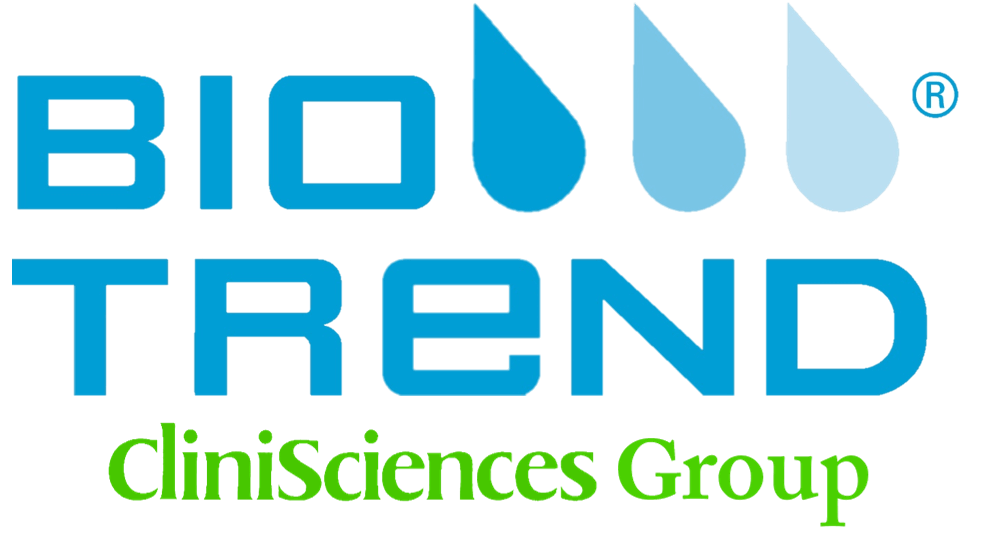Anti-Human HLA-A, B, C (MHC Class I) - FITC
Cat# H201-50
Size : 50µg
Brand : Leinco Technologies
AntiHuman HLAA, B, C (MHC Class I) – FITC
AntiHuman HLAA, B, C (MHC Class I) – FITC
Product No.: H201
Clone W6/32 Target HLAA,B,C Formats AvailableView All Product Type Monoclonal Antibody Alternate Names Major Histocompatibility Class I, MHC class I, human leukocyte antigen (HLA) Isotype Mouse IgG2a k Applications FC |
Antibody DetailsProduct DetailsReactive Species Baboon ⋅ Chimpanzee ⋅ Cynomolgus Monkey ⋅ Feline ⋅ Bovine ⋅ Human Host Species Mouse Immunogen Human tonsil cell membrane Product Concentration 0.2 mg/ml Formulation This Fluorescein (FITC) conjugate is formulated in 0.01 M phosphate buffered saline (150 mM NaCl) PBS pH 7.4, 1% BSA and 0.09% sodium azide as a preservative. Storage and Handling This Fluorescein conjugate is stable when stored at 28°C. Do not freeze. Country of Origin USA Shipping Next Day Ambient Excitation Laser Blue Laser (490 nm) RRIDAB_2892886 Applications and Recommended Usage? Quality Tested by Leinco FC The suggested concentration for this HLAA,B,C Clone W6/32 antibody for staining cells in flow cytometry is 5.0 μg per 106 cells in a volume of 100 μl or 100μl of whole blood. Titration of the reagent is recommended for optimal performance for each application. Each investigator should determine their own optimal working dilution for specific applications. See directions on lot specific datasheets, as information may periodically change. DescriptionDescriptionSpecificity Clone W6/32 recognizes the human MHC class I molecules HLAA, B, and C. Background HLA antibody, clone W6/32, recognizes the major histocompatibility complex (MHC) class I molecules human leukocyte antigen (HLA)A, HLAB, and HLAC. MHC class I is ubiquitously expressed on the cell surface of nucleated cells and consists of a 45kDa type I transmembrane glycoprotein (αchain or heavy chain) and a 12kDa soluble protein (β2microglobulin, β2M)1,2. The αchain consists of three domains (α1, α2, and α3)3. α1 and α2 form the closed antigenbinding groove and bind to 810 aa peptides derived from cytosolic antigens46. β2M noncovalently associates with α3, which is essential for MHC stability. MHC class I plays a critical role in the adaptive immune response by presenting endogenous antigens to cytotoxic CD8 T cells. MHC class I molecules can also present exogenous antigens to CD8 T cells via a process known as crosspresentation7. The T cell receptor (TCR)/CD3 complex of CD8 T cells interacts with peptideMHC class I, which induces CD8 T cell activation and subsequent cellkilling. CD8 molecules also bind to MHC class I, which helps augment TCR signaling8. In contrast to CD8 T cells, MHC class I is an inhibitory ligand for natural killer (NK) cells, promoting self tolerance9. MHC class I also contributes to the positive selection of CD8 T cells and NK cell specificity10,11. Antigen Distribution HLAA, B, and C are ubiquitously expressed on nucleated cells. Ligand/Receptor CD3/TCR, CD8 PubMed NCBI Gene Bank ID Research Area Immunology . Innate Immunity References & Citations1. Mitaksov V & Fremont DH. (2006) J Biol Chem. 281(15):1061825 2. Wieczorek M, et al. (2017) Front Immunol. 8:292 3. Jones EY. (1997) Curr Opin Immunol. 9(1):759 4. Matsumura M, et al. (1992) Science. 257:927–34.10.1126/science.1323878 5. Bouvier M & Wiley DC. (1994) Science. 265:398–402.10.1126/science.8023162 6. Zacharias M & Springer S. (2004) Biophys J. 87:2203–14.10.1529/biophysj.104.044743 7. Cruz FM, et al (2017) Annu Rev Immunol. 35:149176 8. Artyomov MN, et al (2010) Proc Natl Acad Sci USA. 107(39):1691616921 9. Orr MT & Lanier LL. (2010) Cell. 142(6):847856 10. Raulet DH. (1994) Adv Immunol. 55:381421 11. Salcedo M & Ljunggren HG. (1996) Chem Immunol. 64:4458 |



